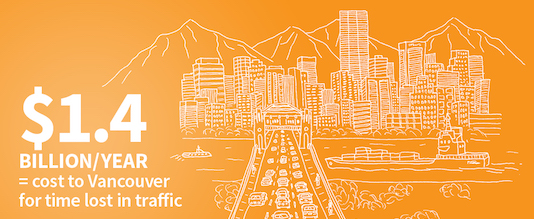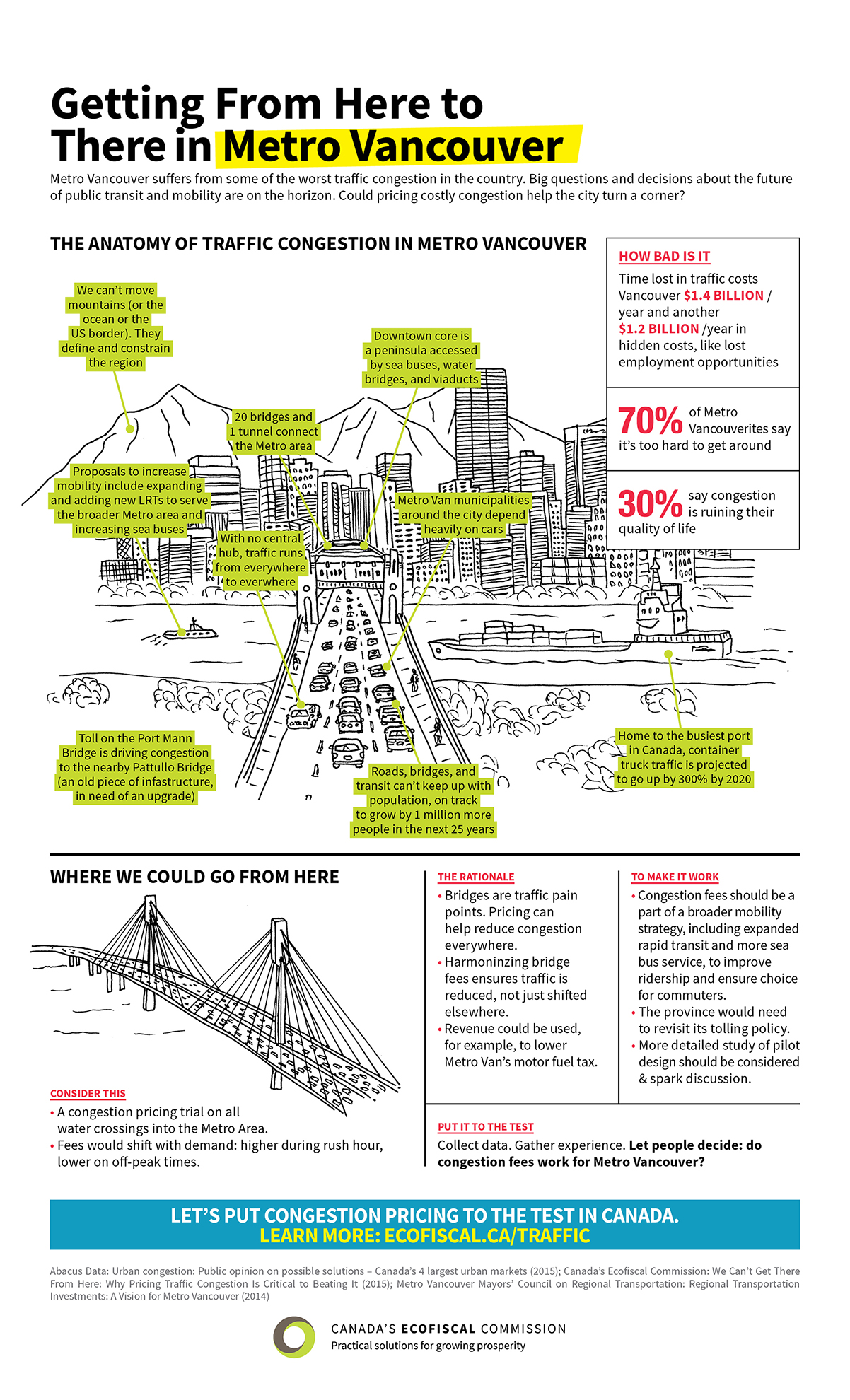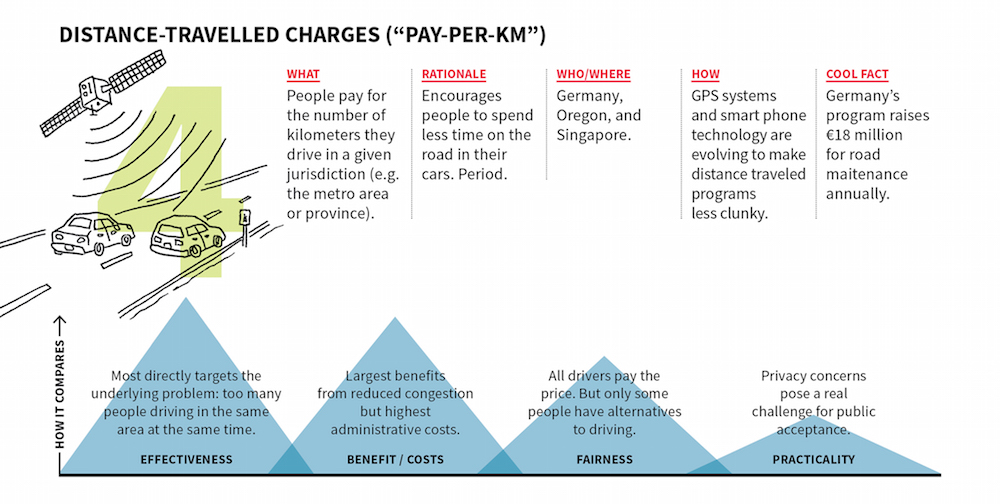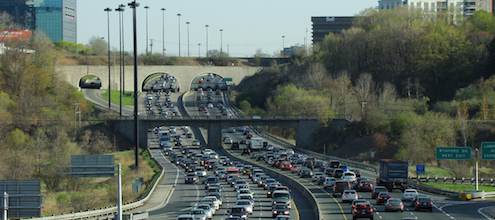
Let’s Talk About How to Get Metro Van Moving
This week, the Ecofiscal Commission launched its latest report We Can’t Get There from Here: Why Pricing Congestion is Critical to Beating It. The report explains how we can’t simply build our way out of congestion, we also need to consider incentives. The report’s central recommendation is that Canada’s four largest cities run congestion pricing pilot projects, supported by all levels of government, to generate the practical knowledge and data necessary to include pricing in our long-term urban mobility plans. But what does that mean for Metro Vancouver?
What does traffic look like in Metro Vancouver?
Before we get into the specific Metro Vancouver idea for a pilot project, let’s review the current traffic situation. One of the striking stats is that 70% of Metro Vancouverites say it’s too hard to get around. Another is that time lost in traffic costs Vancouver $1.4 billion per year. As our chair Chris Ragan and Jock Finlayson of the Business Council of BC recently wrote: there are several things that pretty much everyone agrees with regarding transportation in Metro Vancouver. First, traffic congestion is extremely costly. Second, it’s only getting worse. There may be disagreement around how to get to the solutions, but everyone agrees a range of solutions are needed.
 Of course, the experience of sitting in traffic speaks for itself. Our chair, Chris Ragan, explored Vancouver’s traffic first hand with journalist Trish Kelly. Check out the video of their experience, including a pit-stop for jujubes (the tired road-warriors needed a little sugar boost).
Of course, the experience of sitting in traffic speaks for itself. Our chair, Chris Ragan, explored Vancouver’s traffic first hand with journalist Trish Kelly. Check out the video of their experience, including a pit-stop for jujubes (the tired road-warriors needed a little sugar boost).
Congestion pricing policy option for Metro Vancouver: variable bridge and tunnel tolls
Metro Vancouver’s traffic congestion challenge is shaped by numerous factors: a constrained geography bounded by mountains and ocean, polycentric travel patterns with multiple hubs of activity, and a complex governance structure. Applying variable pricing (i.e. a fee aligned with peak traffic times) to each of the region’s water crossings is a practical option to reduce regional congestion.
Harmonized fees applied to the region’s bridges and tunnels could be an effective way to price congestion since theses crossings intercept a large portion of traffic. Implementing a pilot project may mean revisiting the provincial government’s current policy on tolling.
What might congestion pricing look like in the future?
Prices that vary by time of day, or even dynamically in response to demand would be most effective in specifically targeting peak congestion periods and reducing bottlenecks. In the long-run, the pricing system could expand to be a per-kilometer fee or a distance-based pricing. Of all available pricing options, a comprehensive distance-based system is viewed as the most equitable, because each driver pays directly for the time and use of the roads, no matter where they live in the region. To explain more about what per-km charges entail, we’ve got another infographic (see the full infographic to view all five ways of congestion pricing):
Whether we’re talking about short-term solutions or long-term options, the main point is that dealing with traffic in Metro Vancouver means having a serious conversation about congestion pricing. This is the missing piece of our urban mobility puzzle.
Read the Report: We Can't Get There from Here




Comments are closed.